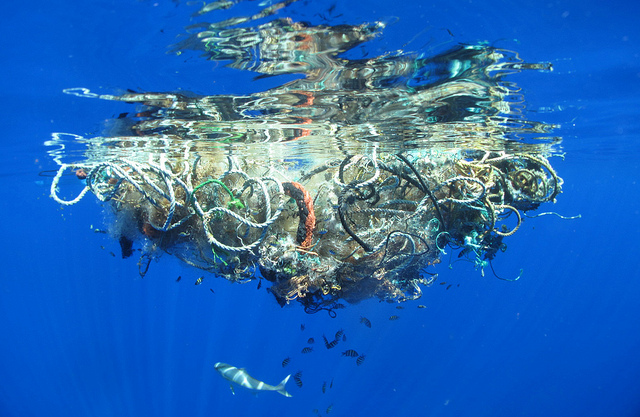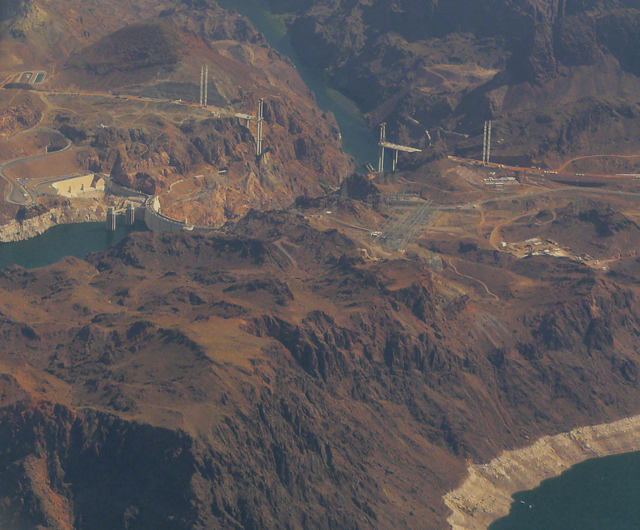Most schoolchildren have a cursory knowledge of Herodotus’ “Seven Wonders of the Ancient World”, even if they can’t name all of them. A forgivable oversight, as the Great Pyramid of Giza is the only one that remains, too large and intractable to go quietly into oblivion.
The others, like the Lighthouse of Alexandria or the ten-story tall Colossus of Rhodes fell long ago to the ravages of nature, time and neglect. But technology has come far since antiquity, and human ingenuity even further. Today’s feats of design and creation eclipse the ancient wonders. They are triumphs of engineering made iconic in their cultural resonance: the Statue of Liberty and Eiffel Tower; The Hoover Dam and Palm Islands of Dubai; The Hubble Telescope and International Space Station. Like their progenitors, they will require commitment and resources to sustain, lest they vanish into the mists like the Hanging Gardens of Babylon.
But what about those vast works of human creation that are going to require commitment and resources to unmake? What about the Wonders we’d care to forget? The miracles of industrialization have not come without cost. Slave laborers at Foxconn, the victims of Bhopal, displaced Canadian Inuit tribes, and the despoliation of the ecosphere all stand as a testament to this. However, they are not Wonders that symbolize our era. Herodotus may have anticipated the Buzzfeed format when he devised his proto-listicle 2 500 years ago, but he could not have predicted that the final structures of our era will likely be testaments to environmental degradation.
It is comforting to believe that the Hubble Telescope or the Statue of Liberty will ultimately survive our era, and become the primary monuments to it. However, our obsession with unsustainable consumption, and its coming ecological consequences, points to a future where Herodotus’ list will be revamped in an alternative direction. It will likely begin with the mass of plastic and garbage twice the size of Texas that is currently adrift in the Pacific Ocean, known semi-officially as the Pacific Garbage Patch.
Originating mainly from Chinese and American coastal industrial activities, a circulating current, or “gyre”, pulls the refuse in a cycle between the western half located near Japan and its eastern half near California. And while 20% of it is run-of-the-mill trash that may dissolve or sink, 80% of it is invisible microplastic that’s been broken down by sunlight but will never biodegrade. At 1.9 million pieces per square mile, it ensnares, poisons, and kills massive quantities of marine and bird life. The Patch is a watery tomb that exemplifies our oblivious brutality towards the environment. It will also likely survive all of us, since we have no idea how to clean it up, and it grows every year.
And if the Pacific Garbage Patch is plastic’s watery tomb, then the Chinese city of Guiyu is plastic’s crematorium. The largest e-Waste site on Earth, the city of 150 000 people employs tens of thousands to sift through burning dunes of discarded, half-melted plastic and electronic trash. Lacking basic respiratory or skin protections, they harvest the carcinogenic heavy metals found in discarded phones, tablets and computers for sale back to local manufacturers. A worthy contender for inclusion in our list, the quality of Guiyu’s air and water registers at extraordinarily toxic levels. A large population of children show lead levels in their blood high above average. Others show signs of neurological illness, lesions, and gastric disorders, all of which may be linked to the eWaste.
The post-modern world requires a new “Wonders of the World” listicle that can recognize our Herculean efforts at destroying the environment. It took a global civilization to erode the ozone layer, to dissolve the Great Barrier Reef, and to melt the Arctic icecaps. As the planet heats, the ice caps melt, and everything from superstorms, to droughts, to pandemics, will follow. A more certain and tumultuous future almost certainly awaits us, which raises the question: how will historical memory commemorate our era? It may be through an ironic twist on Herodotus, if only because that is the best way to reflect the absurdity of garbage potentially outlasting modern society.
Photograph courtesy of Steven Guerresi. Published under a Creative Commons License.





